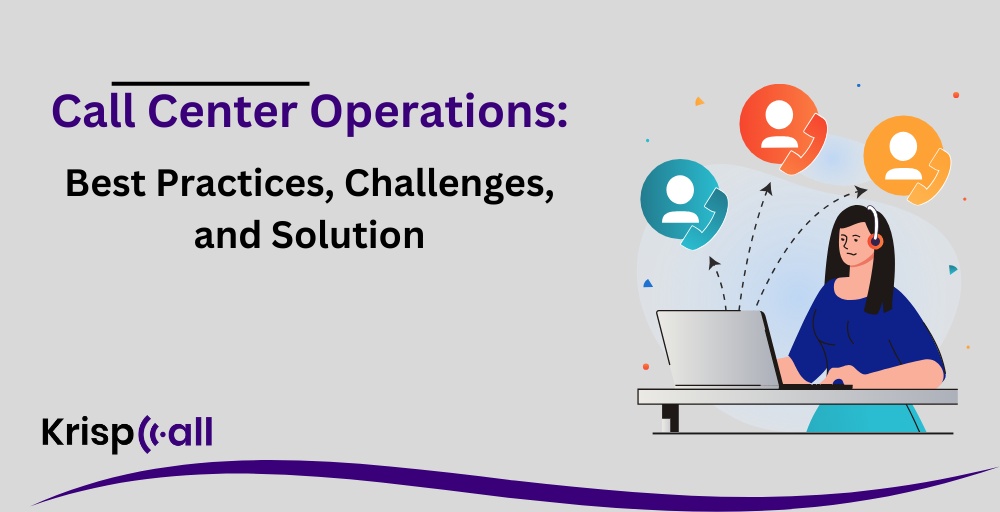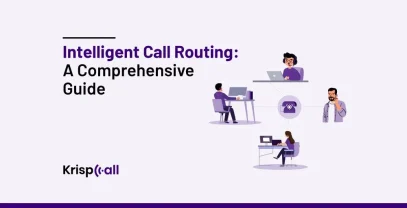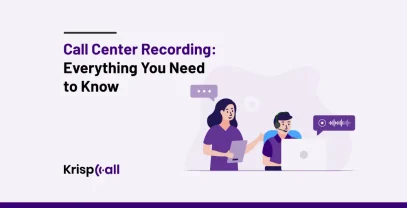Struggling with call center operations? You’re not alone! Many call center managers face this problem daily.
Efficient call center operations are vital for customer satisfaction. Whether you’re a business owner or a customer, and seamless communication matters.
We’ll explore best practices, challenges, and solutions to optimize your call center operations and enhance customer experience.
🔑 Key Points
- Call center operations refer to managing daily activities in a call center, a centralized department that handles inbound and outbound calls from current and potential customers.
- Implementing strategies like employee retention programs, using customer feedback effectively, and adopting cost-saving measures can help address operational difficulties in call centers.
- Platforms like KrispCall offer integrated tools for call routing, CRM, and analytics, enhancing call center productivity and customer satisfaction through streamlined operations and real-time performance insights.
- Call centers are evolving with advancements in AI, automation, omnichannel communication, cloud-based infrastructure, and analytical tools to meet changing customer expectations and improve operational efficiency.
What is Call Center Operations?
A call center operation is a department in which employees receive and make a large number of phone calls to provide customer service, product support, or sales. It handles inbound and outbound calls from current and potential customers.

Call centers are designed to manage large volumes of calls and deliver exceptional customer service experiences. Their primary purpose is to provide customer service, product support, or sales assistance.
These operations can also encompass other forms of communication, such as email, social media, SMS, and in-app chat, especially in modern contact centers.
Key Roles in Call Center Operations
Call center operations involve managing a centralized department that handles many inbound and outbound call customers.
The key roles in call center operations are as follows:
- Call center agent: A call center agent is the first point of contact for customers’ queries and complaints and provides information about products and services. Effective call center agent utilization depends on defining and allocating key roles within the operations structure.
- Call Center Supervisor: A call center supervisor plays a crucial role in the efficient functioning of a call center. They train, monitor, and support call center agents during customer interactions. Their primary goal is to execute the manager’s customer service strategies effectively.
- Call center manager: A call center manager is responsible for setting standards and guidelines for staff to meet customer expectations. They evaluate, coach, and train agents, analyze data, set strategic goals, lead meetings, and manage schedules and budgets.
How Call Center Operations Works?
The call center operations involve a structured process where employees handle incoming and outgoing calls to address inquiries, provide support, and resolve issues.
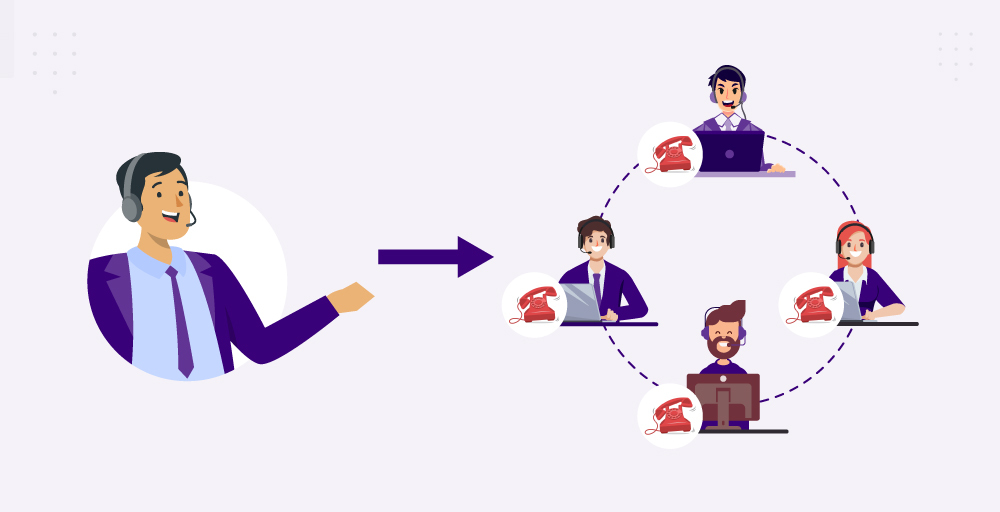
Here is an overview of how call center operations work:
Call Routing and Queueing
During an inbound call, whenever a customer dials a company’s customer service number, an automated system( ACD) routes the call to an available agent based on factors such as skillset, language, or workload. The call can wait in a queue to be connected.
The agent uses dialing software to automatically connect to pre-selected phone numbers for sales surveys or follow-up in case of outbound calls.
Telephonic Communication
Effective customer support services are delivered via telephonic communication in call centers. This involves managing inbound and outbound calls to assist customers with their needs.
Call Resolution and follow-up
The agent aims to address the customer’s issue during the call. This could involve troubleshooting, handling requests, or arranging replacements. In certain situations, call escalation to supervisors or specialists may be necessary. Additionally, follow-up calls or emails might be warranted.
Call Center Technology
Call centers rely on various tools and technology to function efficiently. These include ACDs for call routing, CRM (Customer Relationship Management) systems for storing customer data, and call recording/monitoring for quality assurance.
Best Practices to Manage Call Center Operations
Here are the best practices for managing call center operations:
1. Hire the best employees and train them
It is difficult for a call center to succeed without hiring the right employees with relevant skills and attitudes. So, provide them with comprehensive training on the company and continue empowering them with continuous coaching.
2. Assign specific roles to employees
Establish clear roles and responsibilities for every employee, including managers, supervisors, and agents. This structured approach ensures optimal performance and goal achievement within the call center.
3. Keep the communication line open
Maintain regular communication with agents and supervisors to understand their requirements and obstacles. Facilitate activities such as scheduled meetings, collaborative brainstorming sessions, and strategic retreats to enhance process efficiency and overall performance.
4. Establish incentives for better performance
Incentives such as quotas and rewards can encourage optimum performance, make employees feel appreciated, and motivate them to provide high-quality service.
5. Track call center metrics
Track relevant metrics for call centers, such as First Call Resolution (FCR) rates, Cost per Call (CPC), Customer Satisfaction (CSAT) rates, and Net Promoter Score (NPS), to gain insight into your call center operations and make informed decisions.
6. Invest in technology
Invest in call center technology to enhance the efforts of call center employees. These tools offer features such as data management, call recording, call monitoring, ring groups, and skill-based routing to optimize overall performance.
7. Use call monitoring and scoring
Use call monitoring and scoring to evaluate agent performance and offer constructive feedback. This practice helps to enhance agent-customer interactions and ultimately leads to improved customer experiences.
8. Use customer feedback
Use customer feedback to reduce customer churn and make changes that will help to improve customer satisfaction. This can include surveys, social media, and other feedback channels.
9. Create a call center script
Develop a call center script that promotes professional language, an upbeat tone, and strategically chosen key phrases. Additionally, train agents to avoid specific phrases and language patterns that could lead to negative customer interactions.
Challenges and Solutions in Call Center Operations
Common challenges in call center operations are:
- High Call Volume: Call centers often experience a surge in call volume during peak hours or seasonal events. This leads to challenges in handling a large volume of calls for employees.
- Customer satisfaction: Maintaining high levels of customer satisfaction is crucial for call centers, as low satisfaction ratings can result in customer loss and delay in business growth.
- Cost management: Efficient cost management is essential for call centers to ensure profitability while providing quality service to customers.
Solutions for overcoming call center operations challenges:
- Implementing retention strategies: Call centers can enhance agent morale and retention by acknowledging and rewarding exceptional performance, providing competitive compensation packages, offering training and development opportunities, and implementing gamification strategies to boost engagement.
- Utilizing customer feedback: Develop programs to retain skilled agents. Offer incentives, career development, and a supportive work environment. Invest in agent well-being. Consistently collecting customer feedback through surveys enables call centers to monitor agent performance, pinpoint areas for enhancement, and boost overall customer satisfaction.
- Implementing cost-saving measures: Explore ways to reduce operational costs, Optimize call routing algorithms, invest in efficient technology, and monitor resource utilization.
Future Trends in Call Center Operations
The future trends in call center operations are driven by technological advancements, changing customer expectations, and the need for businesses to stay competitive.
Here are some of the key trends that are shaping the future of call centers:
AI and automation
AI technology is gaining prominence in call center operations. AI-powered chatbots and virtual assistants enhance operational efficiency, reduce wait times, and provide personalized recommendations for customers.
Additionally, automation manages higher call volumes, leading to quicker response times and greater customer satisfaction.
Omnichannel communication
Customers expect to communicate with businesses through various phone, live chat, email, and social media channels. Omnichannel communication allows customers to switch channels without losing context, providing a seamless customer experience.
Cloud-based infrastructure and remote call centers
Cloud-based infrastructure and remote call centers are becoming the norm, enabling businesses to track calls, monitor agent performance, and provide timely feedback to their agents. Flexibility, scalability, and cost-effectiveness are the three requirements driving this movement.
Analytical insights
Sophisticated analytical tools transform data into actionable insights, enabling businesses to assess call center performance and make informed strategic decisions. Real-time, historical, and comprehensive analytics collectively enhance personalized and efficient customer interactions.
Self-service
Self-service options, such as Smart IVRs, online FAQs, and automated chatbots, are becoming more prevalent, allowing customers to access information on their own terms. This trend is driven by customer demand for more control over their business interactions.
Cut Costs, Boost Satisfaction: How KrispCall Optimizes Your Call Center Operations
KrispCall is a comprehensive call center software solution that offers features for both inbound and outbound call center operations.KrispCall’s outbound call center software includes features like power dialers, predictive dialers, call routing, CRM integrations, call recording, voicemail and voicemail drop, and call analytics.
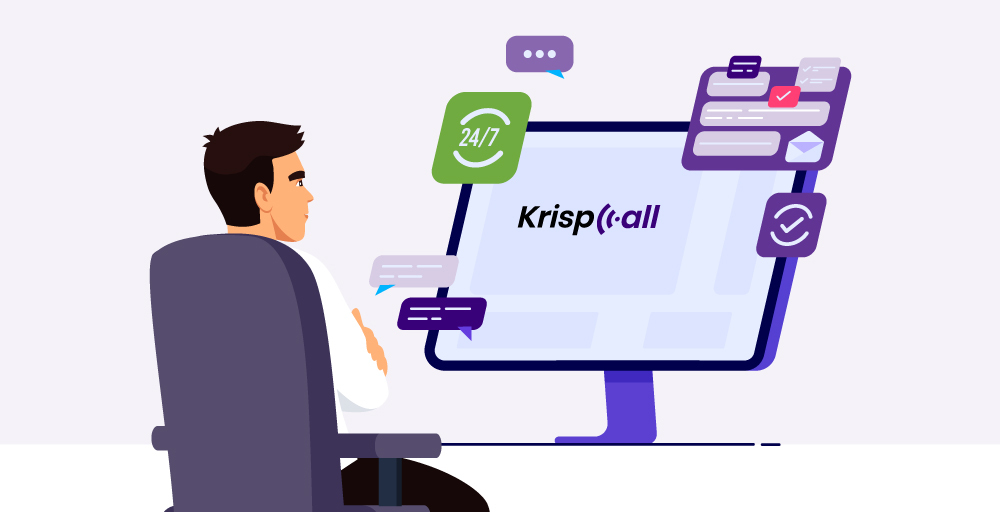
These features help automate repetitive tasks, improve agent productivity, ensure call quality, and provide valuable insights into call center performance. KrispCall’s inbound call center software includes intelligent call routing, comprehensive analytics, 24/7 support, affordable pricing plans, a cloud-based telephony system, and seamless integration with other tools.
Here is how it helps:
- Faster Setup: Imagine getting your phone room ready in minutes. KrispCall helps you quickly set up virtual phone numbers and an agent account so you can start taking calls faster.
- Improved Call Routing: KrispCall helps send calls to appropriate helpers, like a smart waiter directing you to the right table. The system considers factors like the agent’s skills and availability to find the best person to handle your request.
- Improved teamwork: KrispCall allows agents to share phone numbers, so if someone is busy, your call can be directed to another available agent. This helps avoid missed calls and keeps things moving.
- Happy and trained agents: KrispCall allows supervisors to listen in on one-on-one calls to coach and improve agents’ skills. In this way, agents can provide you with the best possible service.
- Working from anywhere: With KripCall, agents can use their personal devices to make and receive calls. This allows for more flexible work arrangements and a potentially happier workforce.
Conclusion
Call center operations play a critical role in delivering exceptional customer experiences. Call centers can improve efficiency, productivity, and overall performance by implementing best practices such as effective workforce management, quality assurance programs, and advanced tools and technologies.
Investing in the latest call center software, including cloud-based solutions, AI-powered chatbots, and data analytics tools, can help call centers streamline operations, reduce costs, and enhance customer interactions. Additionally, implementing a robust training program that focuses on developing agents’ skills and knowledge can help improve the quality of customer interactions and increase customer satisfaction.
KrispCall offers a comprehensive solution for call center operations. With features such as call routing, forwarding, voicemail, CRM, and call analytics, it ensures efficiency, productivity, and customer satisfaction in managing call flows.
Try KrispCall to improve your call center operations.
FAQ
What are the mode of operation of call center?
There are two main modes of operation for call centers they are:
- Inbound Calls: These are incoming calls from customers seeking assistance with the company’s products or services.
- Outbound Calls: In outbound call centers, agents proactively contact customers for sales, marketing, or other purposes
What is call center operations managers?
A call center operations manager is the backbone of a smoothly functioning call center. They oversee the day-to-day operations, ensuring agents have the tools and resources to deliver exceptional customer service.
What is call center operations management?
Call center operations management involves overseeing the daily operations of a call center to ensure that it runs smoothly and efficiently. This includes managing call center agents, monitoring call volume, implementing quality assurance measures, and analyzing call center metrics to identify areas for improvement.
How to improve call center operations?
To improve call center operations, call center operations managers can implement several best practices. Here are some strategies to improve call center operations:
- Define Roles and Responsibilities
- Employee Training
- Optimize Workforce Management
- Leverage Technology
- Track Metrics
- Collect Customer Feedback

